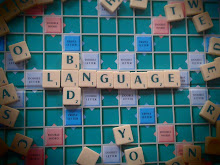I'm going to be doing a monthly writers spotlight, highlighting interesting writers and their best works.
This month we look at Grant Morrison.
Grant Morrison is one of a large bunch of British comic book writers who got picked up by DC and Marvel after success over here, (this bunch including Warren Ellis, Alan Moore, Mike Carey, Paul Cornell, Neil Gaiman and Mark Millar) and probably one of the most iconic comic book writers out there still.
His early works, including Animal Man and Doom Patrol focussed on the metafictional aspects of comics, bringing his characters face to face with God (played by Morrison in a bizarre cameo at the end of his Animal Man run) and even breaking through into the real world towards the end of Doom Patrol.
Running themes throughout his work are the ideas of superheroes coming face to face with analogues of themselves, and it's this aspect that I love about his writing.
So, here's my top Grant Morrison comics:
Arkham Asylum
Batman is called to Arkham Asylum when the inmates take over and demand that he is incarcerated as well simply because to be Batman he has to be as insane as the rest of them. Morrison's Batman stories have a genesis here and have been resonating in his Dark Knight stories ever since (see below). The characterisation of each of the villains is ingenious - his Mad Hatter verges on peadophillic in his Alice in Wonderland obsession, and his Two Face has been weaned off his beloved coin, and has instead been trained to use a six-sided die to increase the different options available to him (eventually, doctors say they want to teach him to make decisions using a set of tarot cards). This story is also the first one to start to delve into what makes Batman, what sets Bruce Wayne apart from other people - why can no-one else be Batman? It's a similar idea that Alan Moore explored in The Killing Joke, when the Joker claims that all it took for him to become a villian was one bad day, ("You had a bad day once, am I right? I know I am. I can tell you had a bad day and everything changed. Why else would you dress up like a flying rat?"). Arkham Asylum is in many ways an introduction to the themes and ideas that Grant Morrison plays with in his writing.
JLA: Earth 2
The Justice League of America as it stands these days is a shambles. For people who don't read DC comics constantly, the team is a vertibable who-the-hell-are-you mixture of C-listers (Donna Troy?) and almost completely unheard of characters (Congorilla anyone?). So what a joy it must have been to have been reading the title in the late 90's - Superman, Green Lantern, The Flash, Batman, Martian Manhunter, Wonder Woman...the list goes on. Morrison's run on JLA is fantastic, but no storyline is stronger than this one-shot graphic novel illustrated by Frank Quitely in which the JLA team up with an alternate universe Lex Luthor to defeat their evil counterparts. Again, Morrison's theme of superheroes coming across alter-ego's of themselves is the basis for the story - and is used here to show how each of them embody their heroic ideals. Only the Bruce Wayne from this earth can be Batman, only Clark Kent can be Superman. Towards the end of Earth 2 when Owlman (that's Batman's alter-ego) reaches Earth 1 and discovers his father's grave he declares "We've been sent to the one place we can't succeed either, tell them nothing means anything. He's dead. There's no-one left to hurt." His heroes, in a classic DC comics fashion, are not in disguise when they are heroes, (Tarantino makes a similar point in Kill Bill Vol 2 when he talks about Clark Kent being Superman's disguise), they are being themselves.
Final Crisis
A massive DC event and a continuation of his both his Seven Soldiers of Victory and JLA series, this seven issue storyline managed to be the most loved and hated series in recent memory. More than anything, this series felt like a finale to his entire JLA run, in which he killed the Martian Manhunter, sent Superman into a metafictional world filled with DC comics characters no-one wanted to write anymore, shot Batman back in time to the dawn of man and brought back the original Flash. The seven issue series serves as both a testement to the power of these characters, but also to the power of stories - where the ultimate villains in the end are the monitors, an alien race who preside of the entire universe and who dictate events and who, in the end back away seemingly because of the power of their own creations.
WE3
Three missing pets become weapons of mass destruction and go on the run in this three issue mini-series. Coming across like a mixture of Transformers and Homeward Bound this is probably the most straightforward of Morrison's stories, but with Frank Quitely's incredible artwork behind it - it becomes a cinematic joy to behold.
Doom Patrol
Anyone who hasn't picked this series up, hasn't experienced comics. This post talks about the series in so much detail. The series has been collected into six trades, and contains a sentient road called Danny The Street. What more do you need to know?
The Audition: Part Nine
8 hours ago




